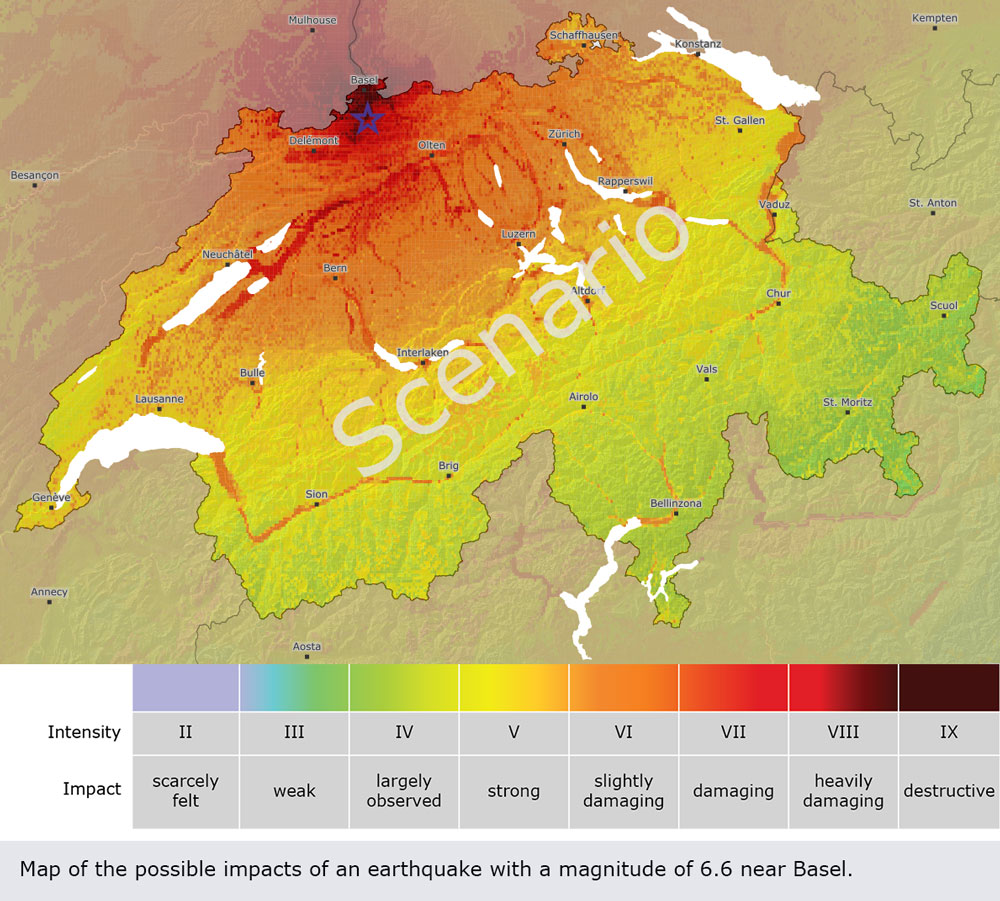2023-02-10
Possible impacts of strong earthquakes in Switzerland
Following the devastating earthquakes in the Syria-Türkiye border region, the question of what impacts similar quakes could have in Switzerland is being asked again and again. Based on preliminary results from the seismic risk model for Switzerland, which is due to be published on 7 March 2023, the Swiss Seismological Service at ETH Zurich has calculated two scenarios: a magnitude-7.8 quake, which is not expected to occur, and a repetition of the 1356 earthquake near Basel, with a magnitude of 6.6. An earthquake with a similar magnitude to this can be expected in the Basel region every 2,000 to 2,500 years. Larger quakes up to a magnitude of around 7 are considered possible in Switzerland due to the tectonic conditions. Such an earthquake anywhere in Switzerland or neighbouring regions has an annual probability of occurrence of approximately 0.1%. By contrast, a magnitude-7.8 earthquake is not to be expected. Based on the logarithmic magnitude scale, such an earthquake would be around 63 times stronger than a magnitude-6.6 quake, which would be reflected in the damage caused.
Read more...Modelling indicates that in both scenarios the entirety of Switzerland would be severely affected by the quake, with large-scale destruction likely in the respective epicentral areas. In the Basel scenario, around 77,000 buildings across Switzerland would suffer moderate to severe damage. In the hardest-hit cantons, this would mean up to 70% of the building stock. As a result, there would be approximately 3,000 fatalities and approximately CHF 45 billion of building damage. Further costs would arise from business interruptions or damage to infrastructure. These costs have not yet been modelled. The magnitude-7.8 scenario, which is not expected to occur, would be likely to result in over 15,000 fatalities and damage in the order of CHF 250 billion. Over half a million buildings would suffer moderate to destructive damage. The impacts of a magnitude-7.8 earthquake are greater primarily because such a quake activates a fault line 120 to 180 km in length, compared with around 15 to 30 km for a magnitude-6.6 quake.
The seismic risk model for Switzerland is being developed by the Swiss Seismological Service (SED) at ETH Zurich together with the Federal Office for the Environment (FOEN), the Federal Office for Civil Protection (FOCP), EPFL and other partners from industry. The model, which will be publicly accessible from 7 March 2023, will make it possible for the first time to reliably quantify expected earthquake damage. It will therefore provide a new tool enabling the public, authorities and businesses to prepare for earthquakes and to better cope with the next damaging quake.
